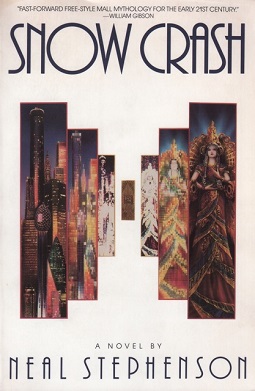I recently had the opportunity to attend VRLA, a conference at the Los Angeles Convention Center focusing on virtual reality technology. I had attended a much smaller demo event created by the Producer's Guild of America last November, but this was the first full-scale industry conference.
VRLA focused primarily on accessible technology - viewers and experiences that can be accessed by the general public at minimal investment. Samsung GEAR VR, a product that works with the Galaxy Note smartphone, was available to demo - I swam with sharks - but more common across the floor was Google cardboard - a simple no-to-low cost VR viewer that works with a number of difference smartphones including iPhone and Android products. Google was giving away these viewers free, and variations were available at a number of other booths. By downloading free or low cost apps from Apple's App Store, or the equivalent, it's now easy for anyone to experience immersive VR, and likely build interest for the higher-resolution, dedicated (and much higher cost) hardware just over the horizon.
Most VR software is in its infancy - more short demos than fully implemented programs. Once you've experienced this world, however, you will be stunned by the potential. I've shared my experience with dozens of people over the last week, from eleven years old to seventy-two. No one came away unimpressed. Apps vary in resolution and interactivity, but this is clearly only the beginning.
Here are just a few of the apps that have most impressed me as I've explored the VR landscape over the past week. Most experiences won't last longer than a few minutes. Make sure to put on your headphones!
DinoTrek VR
Always my first choice when introducing VR, this program offers a journey through a landscape of fully animated dinosaurs of all shapes and sizes - flying, fighting and caring for their young. Make sure to look over your shoulder - a T-Rex might be right behind you. More scenes will be added later.
InMind VR
You'll shrink down and journey through the human brain to conquer depression by destroying red neurons. How do you fire your weapon? Just stare! A great example of the potential educational games in the VR arena.
Sisters
The beginnings of a VR ghost story. You're sitting on a sofa in a creepy old parlor. A doll lies on a shelf behind you. The television shows static. Things start happening. Though just one scene so far, this is a great indication of just how scary VR horror will be...
Expanse VR
In this promo for an upcoming series on the SyFy channel, you're floating in space by a gigantic ship as it rockets past Saturn. Inspiring!
Vrse
An App offering numerous downloadable VR experiences. Make sure to try
Walking New York, a VR documentary about the making of a recent cover of the New York Times Magazine. Another must-look is
Evolution of Verse, a CGI work of art that also manages to be emotionally immersive.
I'll explore more titles in the future - but these definitely include the "wow" factor! Let me know what you find!
Search "Google Cardboard" on Amazon to purchase a low-cost (starting at $10) viewer and learn about which phones are compatible.
It's worth your time - go for it!












